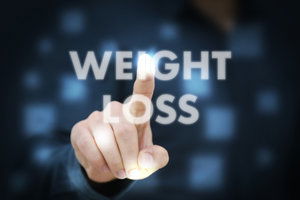Weight Management Is More than Calories In versus Calories Burned

It is true that counting calories can ultimately help you lose or gain weight, but when you need to fine tune menus to focus on specific goals, it is more important to know which foods are providing the calories you consume. Nonetheless, how your body uses the energy depends on the type of food that produced the calorie. Your body will burn some calories and store others as fat. The type and ratio of macronutrients eaten determines whether your body burns fat and rebuilds muscles.
- PROTEIN - Ideally, your macronutrient consumption will include the following lean proteins in moderate amounts: fish, seafood, eggs, lean chicken, pork, beef and lamb. If you are trying to lose weight or build muscle mass, add lean protein. When compared to carbs and fat, protein requires more energy to digest and helps to control your appetite.
- CARBOHYDRATES - Fiber is a type of carbohydrate that the body cannot digest, so it does not produce energy like sugar or starches. High fiber foods are however great for weight loss as they leave you feeling full longer. Added sugars are not naturally occurring and are defined as those added to foods during preparation or processing. Major sources of added sugars that should be avoided during dieting include soft drinks, cookies, cakes, pies, fruit punches, dairy desserts and candy.
- FAT - Healthy fats are good for you but try to eat most of your fat from unsaturated sources (avocados, nuts, olive oil and seeds) rather than saturated or trans fats. Omega-3 fatty acids and omega-6 fatty acids are essentials and must be obtained through your diet. Trans fats have been shown to increase the risk of coronary heart disease and should be totally avoided.
Instead of focusing on "calories in" versus "calories burned", take time to see how your body responds to different macronutrients with the same number of calories. Learning the correct portion size for each macronutrient is critical to keeping your macro intake balanced as well as managing your goal for calorie consumption. Once you learn to eyeball the proper macro portion-sizes for whole grains, fruits, vegetables, protein and fats, you can lose weight without constantly crunching numbers.
By submitting this form, you agree to receive marketing text messages from us at the number provided, including messages sent by autodialer. Consent is not a condition of any purchase. Message and data rates may apply. Message frequency varies. Reply HELP for help or STOP to cancel. View our Privacy Policy and Terms of Service.

